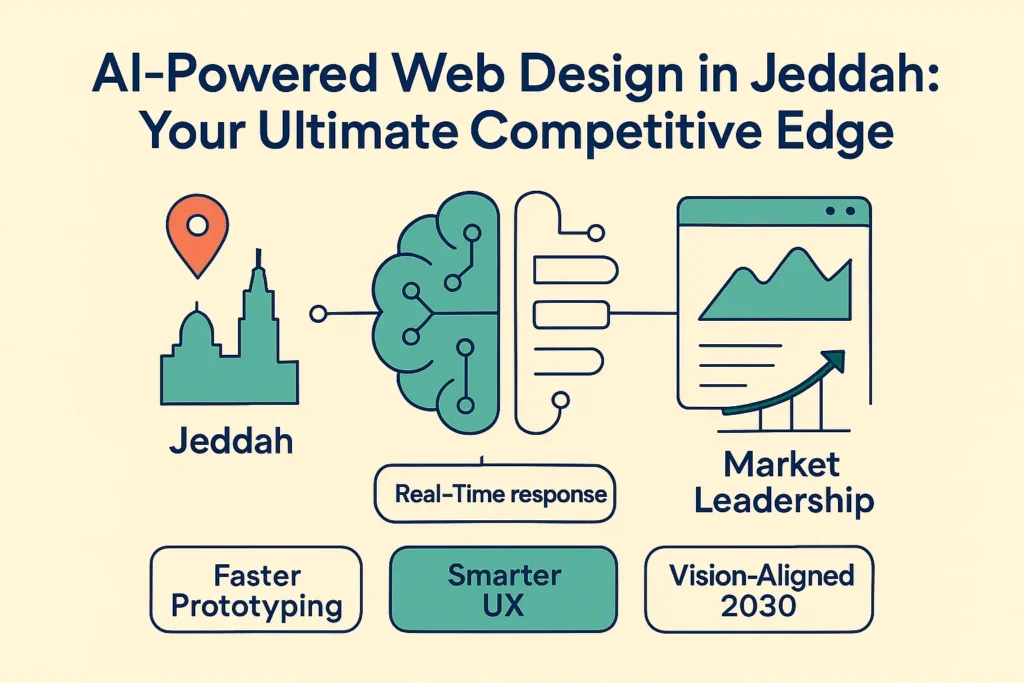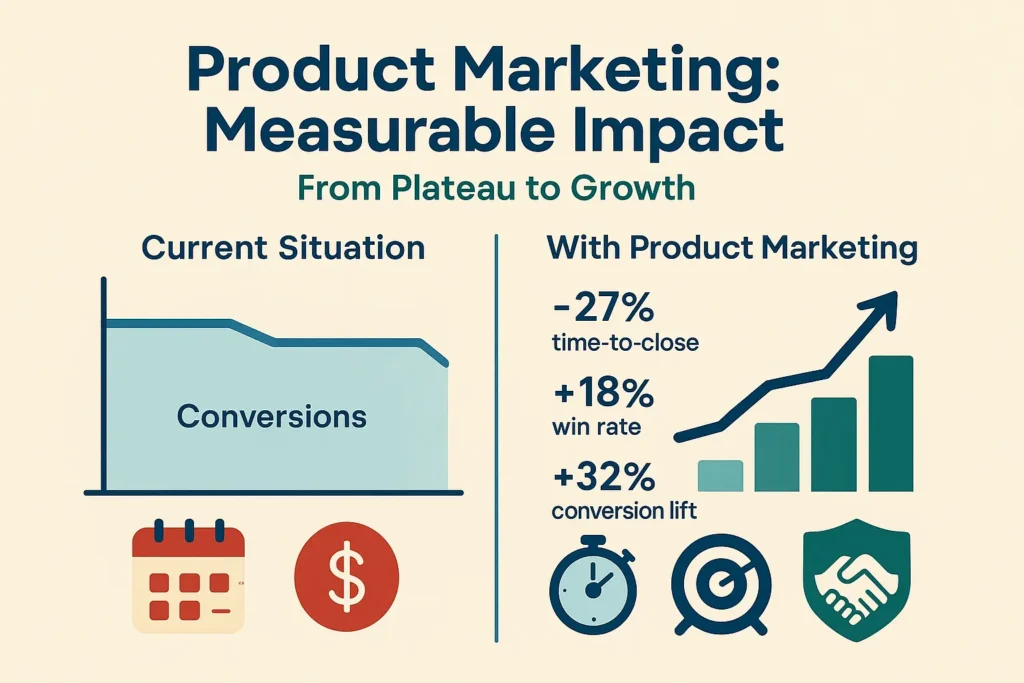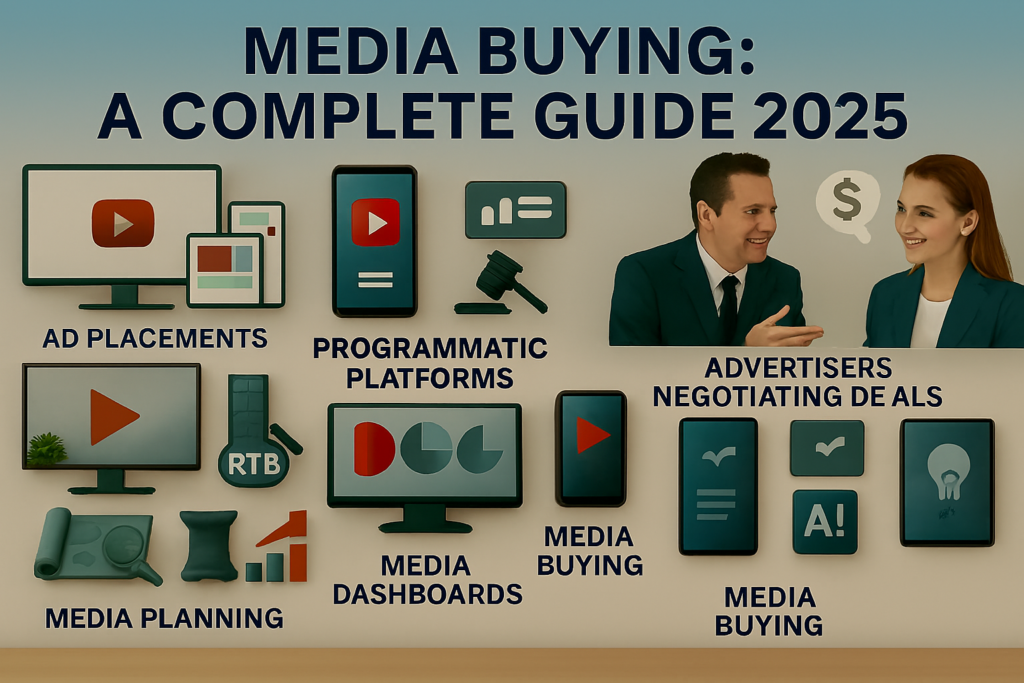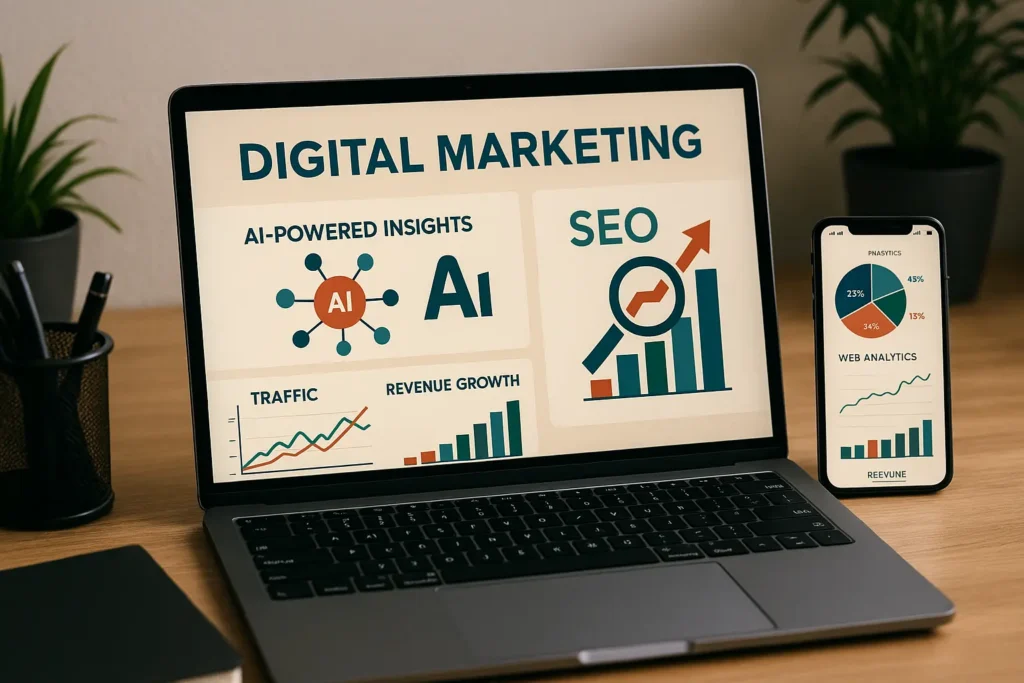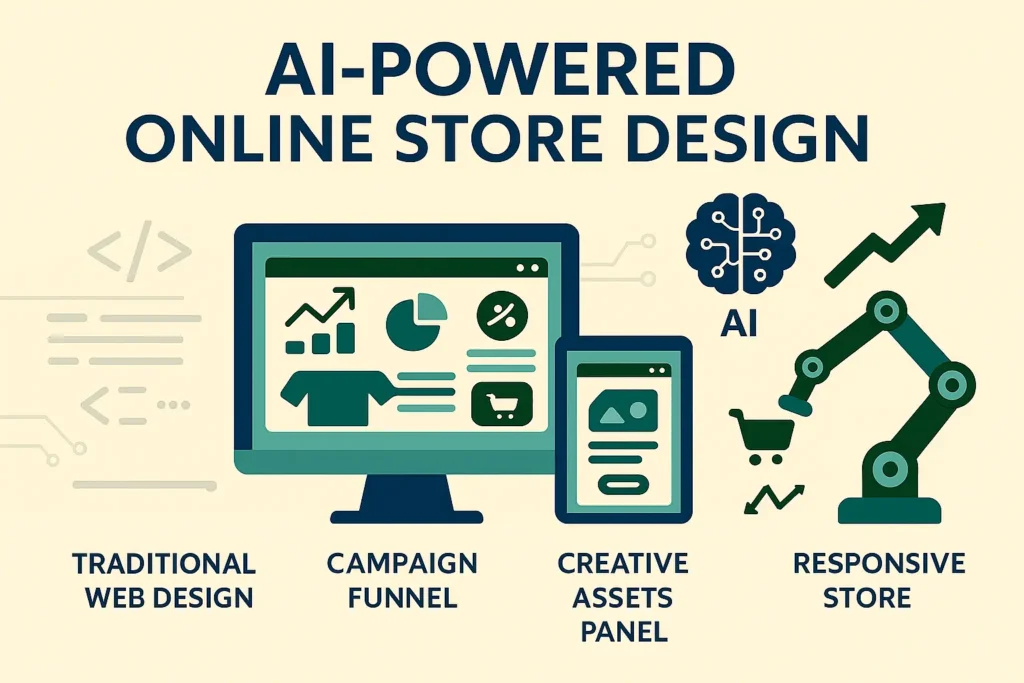
How to Use AI to Design an Online Store That Attracts Customers
Design an online store: The AI Revolution
You’re witnessing a fundamental shift in how online stores come to life. Traditional web design methods, which once required months of development, thousands of dollars, and teams of specialists, are rapidly becoming obsolete. Today, artificial intelligence is democratizing professional web design, putting powerful tools directly into your hands—regardless of your technical background.
The competitive landscape has changed dramatically. While your competitors struggle with outdated design processes, you can leverage AI to create sophisticated, customer-focused online stores in a fraction of the time it takes. Companies like Shopify, Wix, and emerging AI-first platforms are already seeing tremendous success with their AI-powered design tools, with some users launching profitable stores within days rather than months.
Consider this: businesses using AI-enhanced design tools report up to 40% faster time-to-market and 60% lower initial development costs. When you design an online store with AI assistance, you’re not just saving resources—you’re gaining access to data-driven insights that would typically require expensive market research and A/B testing.
“AI doesn’t replace creativity; it amplifies it. The most successful online stores of 2025 will be those that harness artificial intelligence to understand their customers better than ever before.”
Understanding AI’s Role in Modern Online Store Design
Before you dive into AI-powered design tools, you need to understand what artificial intelligence can and cannot accomplish for your e-commerce venture. AI excels at pattern recognition, data analysis, and automating repetitive design tasks. It can analyze thousands of successful online stores to recommend optimal layouts, color schemes, and user experience elements for your specific industry.
However, AI isn’t a magic solution that replaces strategic thinking. You still need to define your brand identity, understand your target audience, and make crucial business decisions. Think of AI as your incredibly skilled design assistant—one that never sleeps, has access to vast amounts of market data, and can implement changes instantly.
Different types of AI tools serve various purposes in e-commerce design. Machine learning algorithms can predict which design elements will perform best for your audience, while natural language processing can help create compelling product descriptions. Computer vision AI can optimize your product images, and predictive analytics can suggest layout improvements based on user behavior patterns.
The key distinction lies between AI-assisted and fully automated design. AI-assisted tools guide your decisions and speed up implementation, while fully automated systems create complete stores with minimal input. Most successful online retailers find the sweet spot somewhere in between, using AI to handle technical aspects while maintaining control over brand strategy and customer experience.
AI-Powered User Experience Optimization
Your customers’ journey through your online store creates a wealth of data that AI can transform into actionable insights. Modern AI tools can track how visitors navigate your site, identify friction points in your sales funnel, and automatically suggest improvements to boost conversion rates.
When you design an online store using AI-powered UX optimization, you’re essentially getting a team of data scientists working around the clock. These tools can run continuous A/B tests on different layout elements, automatically implementing the winning variations. For instance, AI might discover that moving your search bar to the left side of the page increases usage by 23%, then make that change automatically.
Navigation structure represents one of the most critical aspects of user experience. AI algorithms can analyze your product catalog and customer behavior to suggest the most intuitive menu structures and category arrangements. They consider factors like seasonal trends, popular product combinations, and user search patterns to create navigation that feels natural to your specific audience.
The checkout process offers tremendous opportunities for AI optimization. Smart algorithms can identify exactly where customers abandon their carts and test different solutions—whether that’s simplifying form fields, adding trust badges, or offering alternative payment methods. Some AI tools can even personalize the checkout experience based on individual customer preferences and past behavior.
Leveraging AI for Visual Design and Branding
Visual design sets the emotional tone for your entire customer experience, and AI tools have become remarkably sophisticated at creating cohesive, professional aesthetics. Advanced AI systems can analyze your industry, target demographic, and brand personality to generate color palettes that resonate with your specific audience.
Typography selection, once the domain of experienced designers, now benefits from AI analysis of readability, brand alignment, and conversion optimization. AI tools can test hundreds of font combinations to identify which ones improve user engagement and sales performance for your particular market segment.
Logo creation and brand asset generation have been revolutionized by AI technology. You can input basic information about your business and receive dozens of professional-quality logo options within minutes. These systems understand design principles like balance, contrast, and scalability, ensuring your brand assets look professional across all platforms and sizes.
Smart layout suggestions represent perhaps the most impressive advancement in AI design tools. By analyzing successful stores in your industry, AI can recommend specific arrangements of elements that historically drive higher conversion rates. However, you must balance this automation with your unique brand personality—the goal isn’t to look exactly like every other store in your niche.
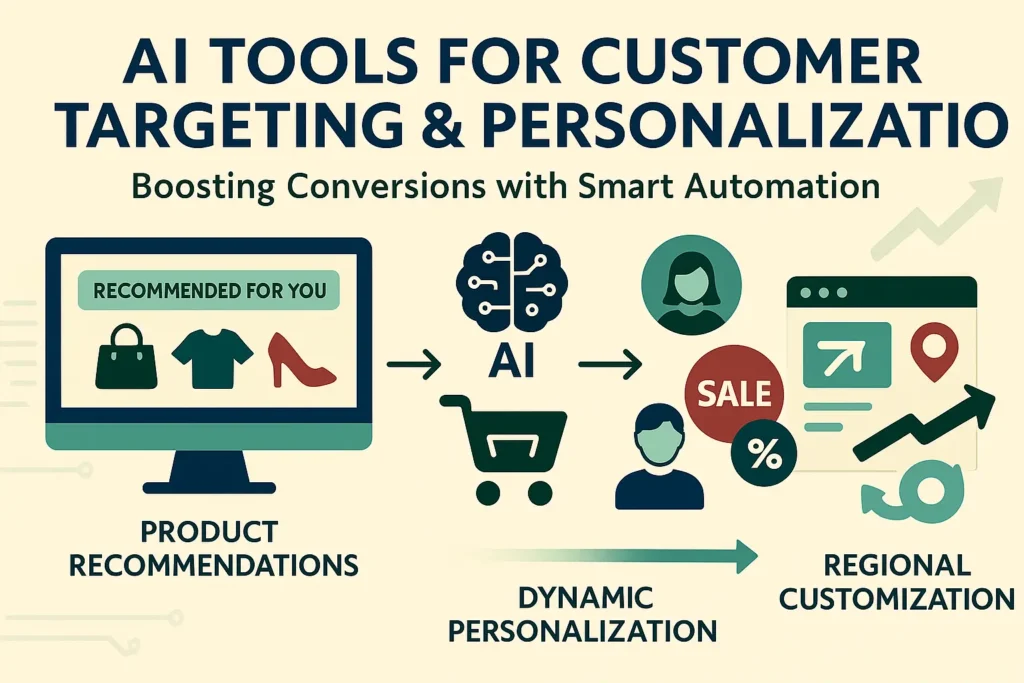
AI Tools for Customer Targeting and Personalization
Personalization has evolved far beyond simply displaying a customer’s name on your homepage. Modern AI systems can create entirely customized shopping experiences based on individual visitor behavior, preferences, and purchase history. This level of personalization was once available only to major retailers with substantial technical resources.
Dynamic content personalization allows your store to adapt in real-time as customers browse. AI algorithms track user behavior patterns and adjust product recommendations, promotional offers, and even design elements to match individual preferences. A visitor interested in premium products might see luxury-focused design elements, while price-conscious shoppers could encounter more promotional messaging.
Product recommendation engines powered by AI can significantly boost your average order value and customer satisfaction. These systems analyze not just individual purchase history, but collective behavior patterns across your entire customer base to suggest items that customers are most likely to purchase together.
Geolocation-based customization enables your store to adapt to regional preferences, local holidays, weather patterns, and cultural nuances. AI can automatically adjust product displays, promotional messages, and even color schemes based on where your visitors are located, creating a more relevant and engaging experience.
AI-Driven Product Presentation and Photography
Product photography often represents the largest visual investment for new online retailers, but AI tools are dramatically reducing both costs and complexity. Advanced image processing algorithms can enhance product photos, remove backgrounds, and create professional-looking lifestyle images without expensive photo shoots.
Automated image optimization ensures your product photos load quickly across all devices while maintaining visual quality. AI algorithms compress images intelligently, preserving important details while minimizing file sizes that could slow down your site and hurt conversion rates.
Background removal and replacement have become incredibly sophisticated through AI technology. You can upload basic product photos and have AI automatically create clean, professional images with consistent backgrounds across your entire catalog. Some tools can even generate realistic lifestyle contexts, showing your products in use within appropriate settings.
Smart image tagging and organization help you manage large product catalogs efficiently. AI can automatically generate descriptive tags, categorize images, and even identify which photos perform best for different types of products. This automation saves countless hours of manual work while improving your site’s search functionality.
Implementing AI Chatbots and Customer Service Features
Customer service expectations have evolved significantly, with modern shoppers expecting instant responses to their questions regardless of the time of day. AI-powered chatbots can handle a substantial portion of customer inquiries while providing seamless handoffs to human agents when needed.
The choice between rule-based and AI-powered chatbots depends on your specific needs and budget. Rule-based systems work well for straightforward questions about shipping, returns, and basic product information. AI-powered chatbots can handle more complex conversations, understand natural language, and even help customers find products based on vague descriptions.
Training your AI assistant requires thoughtful preparation of your product information, common customer questions, and brand voice guidelines. The most effective AI chatbots sound natural and helpful rather than robotic, maintaining your brand personality throughout every interaction.
Integration between live chat and AI pre-screening creates an efficient system where AI handles routine inquiries while routing complex issues to human agents with relevant context. This approach ensures customers get quick answers to simple questions while receiving personalized attention for more complex needs.
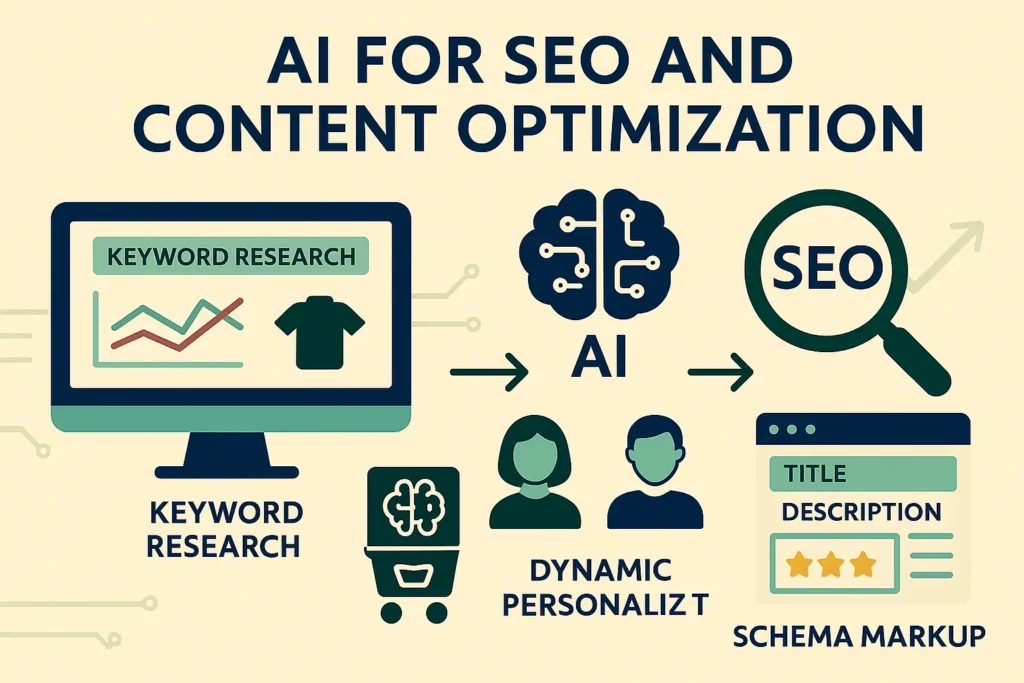
AI for SEO and Content Optimization
Search engine optimization has become increasingly complex, but AI tools can help you navigate these challenges and improve your store’s visibility. AI-powered keyword research goes beyond simple search volume metrics to identify opportunities based on competition levels, seasonal trends, and buyer intent signals.
Automated content generation for product descriptions can save enormous amounts of time while ensuring consistency across your catalog. AI systems can analyze successful product descriptions in your industry and create compelling, SEO-optimized copy that highlights key features and benefits.
Meta descriptions and title optimization represent tedious but crucial SEO tasks that AI can handle efficiently. These systems understand search engine requirements while crafting compelling snippets that encourage clicks from search results pages.
Schema markup automation helps search engines understand your product information, reviews, and business details. AI tools can implement structured data correctly across your site, improving your chances of appearing in rich snippets and product search results.
Mobile Optimization with AI Assistance
Mobile commerce continues to grow rapidly, making mobile optimization absolutely critical for success. AI-powered testing tools can simulate how your store performs across hundreds of different devices and screen sizes, identifying potential issues before they affect real customers.
Page speed optimization becomes particularly important on mobile devices, where connection speeds may vary. AI algorithms can automatically optimize images, compress code, and prioritize loading of above-the-fold content to ensure fast, smooth browsing experiences.
Touch-friendly interface recommendations help ensure your store works intuitively on touchscreen devices. AI can analyze your layout and suggest improvements for button sizes, spacing, and navigation elements that work better with finger-based interaction.
Progressive web app features, implemented through AI assistance, can make your store feel more like a native mobile application. These technologies enable offline browsing, push notifications, and faster loading times that significantly improve the mobile shopping experience.
Keep reading and uncover secrets that can change the way you work. How an AI-Powered Website Design Company in Riyadh Revolutionizes User Experience and Maximizes Business Profits
AI Analytics for Continuous Store Improvement
Data analytics represents one of AI’s most powerful applications for online retail. Modern AI systems can process vast amounts of customer data to identify patterns and opportunities that would be impossible to spot manually. When you design an online store with AI analytics integration, you’re setting up systems for continuous improvement based on real customer behavior.
Setting up comprehensive analytics dashboards allows you to monitor key performance metrics in real-time. AI can automatically flag unusual patterns, identify trending products, and alert you to potential issues before they significantly impact sales.
Predictive analytics help you make smarter inventory decisions by forecasting demand based on seasonal trends, marketing campaigns, and broader market conditions. This capability reduces the risk of stockouts while minimizing excess inventory costs.
Customer behavior pattern recognition reveals insights about how different segments of your audience interact with your store. AI can identify which design elements work best for different customer types, allowing you to create more targeted and effective shopping experiences.
Keep reading and uncover secrets that can change the way you work. Top Website Development Services in Saudi Arabia Powered by AI to Boost Your Business
Choosing the Right AI Tools and Platforms for Your Store
The AI tool landscape changes rapidly, making platform selection a crucial decision that will impact your store’s long-term success. Consider factors like ease of use, integration capabilities, scalability, and total cost of ownership when evaluating different options.
| Platform Type | Best For | Key Advantages | Considerations |
|---|---|---|---|
| AI-First Builders | Beginners, rapid deployment | Quick setup, automated optimization | May lack advanced customization |
| Traditional Platforms with AI | Established businesses | Familiar interfaces, extensive features | Learning curve for AI features |
| Enterprise AI Solutions | Large catalogs, complex needs | Advanced analytics, custom integration | Higher costs, technical expertise needed |
Budget considerations extend beyond initial platform costs to include transaction fees, add-on features, and potential migration costs if you outgrow your chosen solution. Many platforms offer free trials that allow you to test AI capabilities before committing to paid plans.
Integration capabilities become increasingly important as your business grows. Ensure your chosen platform can connect with your existing tools for inventory management, accounting, email marketing, and customer service.
Scalability planning helps you avoid costly platform migrations later. Consider how AI tools will adapt as your product catalog grows, traffic increases, and your feature requirements become more sophisticated.
Keep reading and uncover secrets that can change the way you work. Web Development: The Complete Guide
Your AI-Powered Store Success Blueprint
Successfully implementing AI in your online store requires a structured approach that balances automation with strategic oversight. Start by identifying the areas where AI can provide the most immediate value—typically design optimization, content creation, and customer service automation.
Your implementation timeline should prioritize foundational elements first. Begin with AI-assisted design and user experience optimization. Then layer in advanced features like personalization and predictive analytics as you gather customer data and refine your understanding of what works best for your audience.
Common pitfalls include over-relying on automation without understanding your unique market position. Neglecting to maintain brand consistency across AI-generated content and failing to regularly review and adjust AI recommendations based on business results.
Measuring ROI from AI implementation requires tracking both direct metrics like conversion rate improvements and indirect benefits such as time savings and reduced manual work. Most businesses see positive returns within three to six months of implementation when AI tools are properly configured and managed.
Future-proofing your store involves staying informed about emerging AI technologies while maintaining flexibility in your current setup. The AI landscape evolves rapidly, and the most successful online retailers remain adaptable to new opportunities and capabilities as they become available.
Turn your goals into real achievements with our tailored services – request the service now.
Frequently Asked Questions (FAQ)
Do I need technical skills to use AI for store design?
Most modern AI design tools require no coding knowledge whatsoever. Platforms like Shopify’s AI assistant, Wix ADI, and specialized AI store builders use conversational interfaces where you simply answer questions about your business goals and preferences. The AI handles all technical implementation automatically.
How much does it cost to build an AI-powered online store?
Costs vary significantly based on your chosen platform and feature requirements. Basic AI store builders start around $10-30 per month, while enterprise solutions can cost hundreds of dollars per month. However, the time and resource savings often offset these costs quickly. Many businesses report saving 50-70% compared to traditional design and development approaches.
Can AI completely replace human designers?
AI excels at implementing best practices and optimizing performance, but human creativity and strategic thinking remain essential. The most successful stores combine AI efficiency with human oversight for brand strategy, creative direction, and complex problem-solving. Think of AI as augmenting rather than replacing human expertise.
How long does it take to build a store with AI?
Basic AI-powered stores can be operational within hours. More sophisticated implementations typically require 1-2 weeks for full customization and testing. This represents a dramatic improvement over traditional development timelines that often extend for months.
Will my AI-designed store look generic?
Quality AI tools create unique designs based on your specific industry, brand requirements, and customer preferences. While they use proven design principles, the combination of elements, content, and customization options ensures your store maintains distinctiveness. The key lies in providing detailed input about your brand identity and regularly refining AI recommendations to match your vision.
Your Path Forward in the AI-Enhanced E-commerce Landscape
The opportunity to leverage artificial intelligence for e-commerce success has never been more accessible or powerful. You’re positioned at a unique moment where sophisticated AI tools are becoming mainstream while many competitors have yet to fully embrace these capabilities.
Success in AI-powered ecommerce isn’t about replacing human judgment with algorithms—it’s about amplifying your decision-making capabilities with data-driven insights and automating time-consuming tasks that don’t require your personal expertise. When you design an online store with AI assistance, you’re freeing yourself to focus on strategy, customer relationships, and business growth rather than technical implementation details.
The businesses that will thrive in the coming years are those that view AI as a competitive advantage rather than a replacement for fundamental business principles. Your store’s success will still depend on understanding your customers. Offering valuable products and delivering exceptional experiences—AI simply makes these goals more achievable and sustainable.
Start small, learn continuously, and scale systematically. The AI tools available today represent just the beginning of what’s possible in e-commerce automation and optimization. By building your expertise now and establishing AI-enhanced processes. You’re creating a foundation for sustained competitive advantage as these technologies continue to evolve.
Your customers expect fast, personalized, and intuitive shopping experiences. AI gives you the power to deliver on these expectations while building a more efficient and profitable business. The question isn’t whether AI will transform e-commerce—it’s whether you’ll be leading that transformation or scrambling to catch up.
